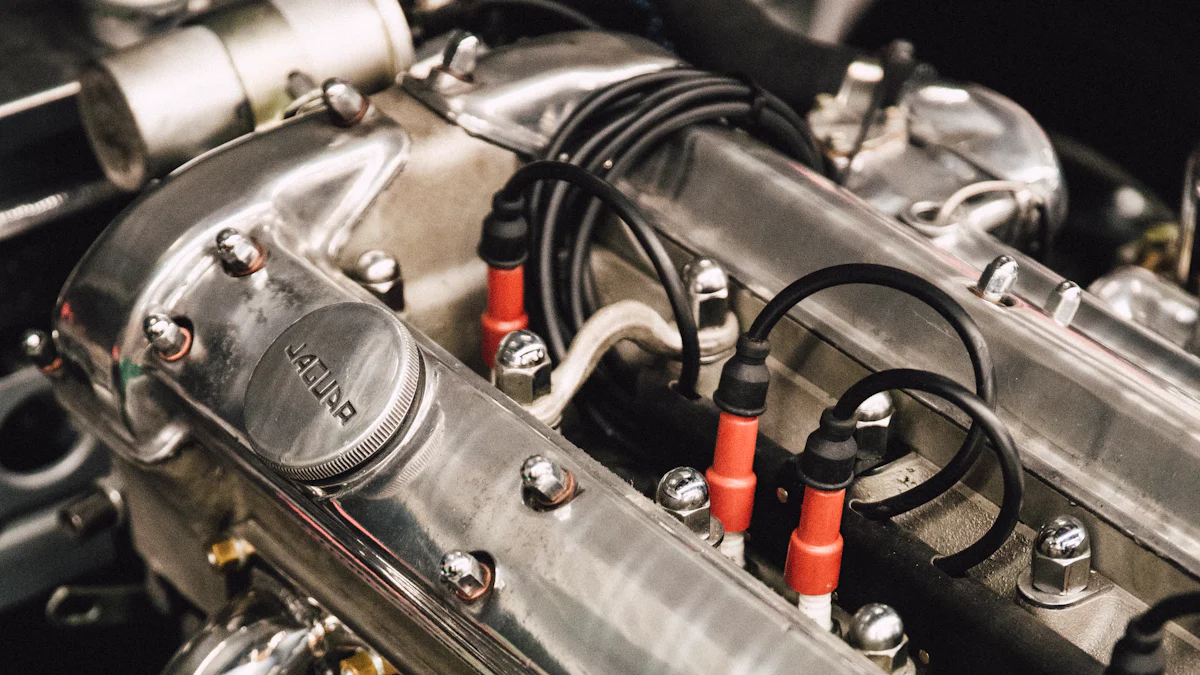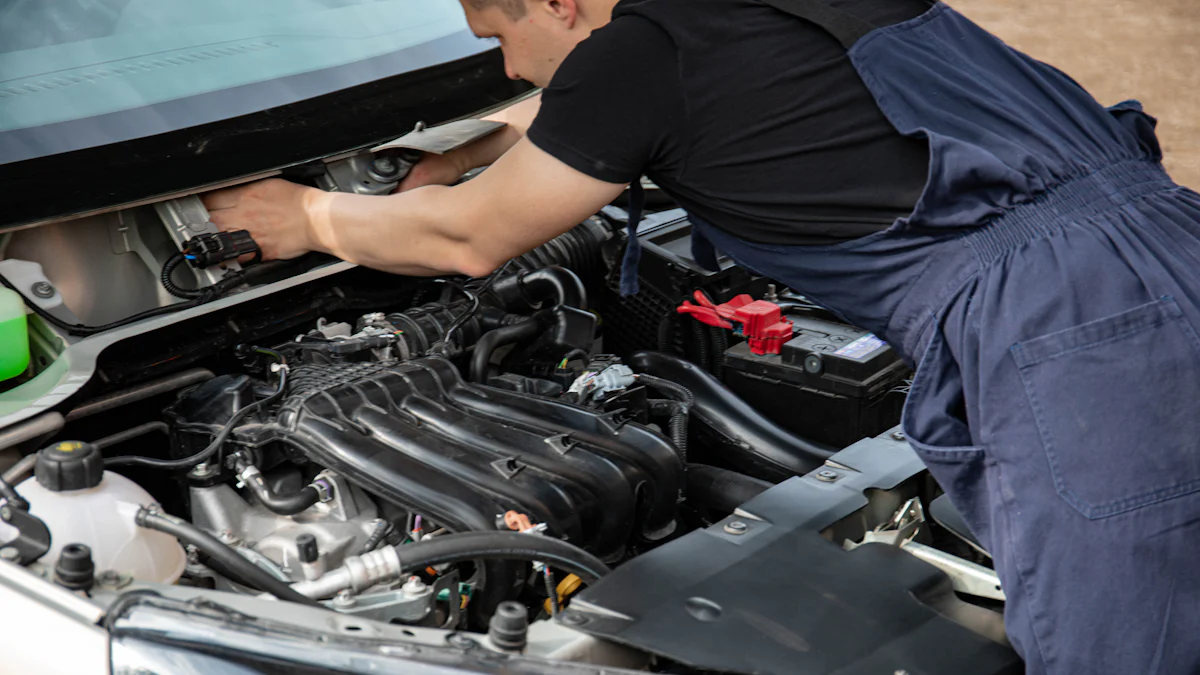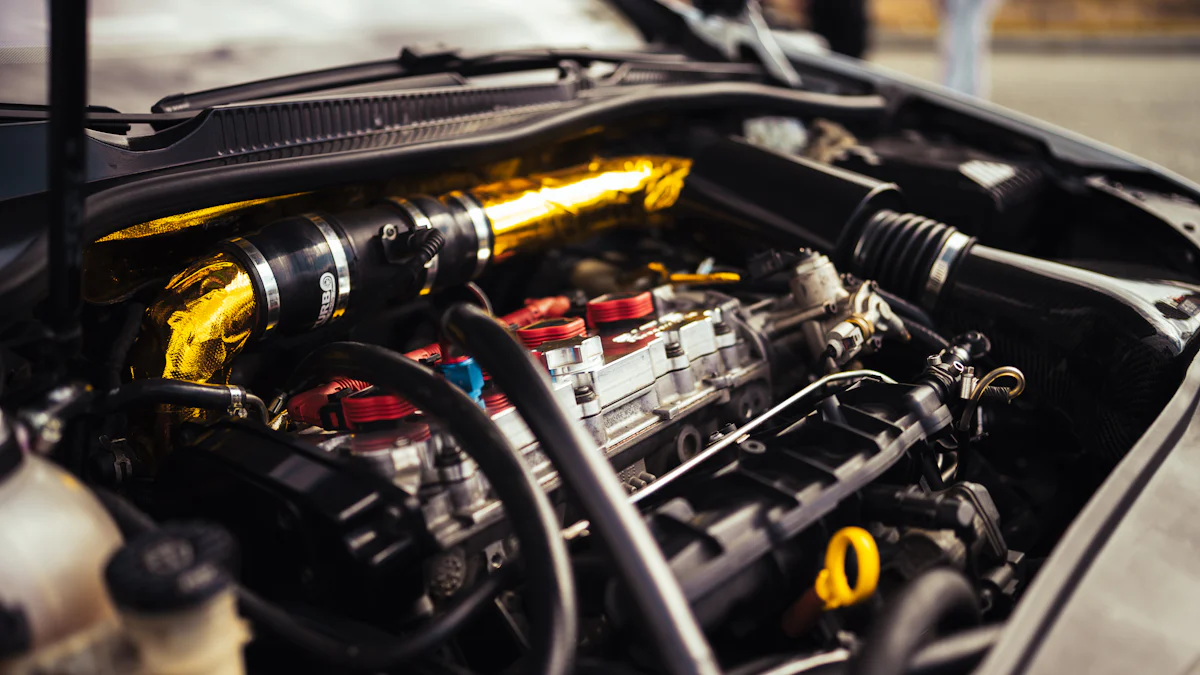
Upgrading the engine intake manifold offers significant performance benefits. Enhanced airflow improves horsepower and torque, especially in the upper RPM range. Popular options include the AEM Short Ram, AEM Cold Air Intake, and CSS manifolds. These upgrades provide better top-end power without sacrificing midrange grunt. Performance enthusiasts often choose these modifications to achieve a balanced increase in engine efficiency.
Understanding the B20 Intake Manifold
What is the B20 Intake Manifold?
Basic Function
The B20 intake manifold plays a crucial role in an engine’s performance. This component directs air from the air filter to the engine cylinders. The design of the intake runners and plenum affects how efficiently this process occurs. Efficient airflow can significantly impact engine power and efficiency.
Role in Engine Performance
The B20 intake manifold directly influences engine performance. By optimizing airflow, it ensures that each cylinder receives an adequate amount of air for combustion. This leads to improved fuel efficiency and increased horsepower. A well-designed intake manifold splitted Intake can enhance both low-end torque and high-end power, making it a vital upgrade for performance enthusiasts.
Why Upgrade the B20 Intake Manifold?
Benefits of Increased Airflow
Upgrading the B20 intake manifold offers several benefits. One primary advantage involves increased airflow to the engine. Enhanced airflow improves combustion efficiency, leading to better throttle response and acceleration. An upgraded manifold allows more air to enter the cylinders, which translates into higher horsepower and torque.
Impact on Horsepower and Torque
An upgraded B20 intake manifold can significantly boost horsepower and torque. By allowing more efficient air-fuel mixture delivery, it enhances overall engine performance. Enthusiasts often notice substantial gains in both peak horsepower and mid-range torque after upgrading their manifolds. These improvements make a noticeable difference in driving dynamics, especially in high-performance applications like racing or spirited street driving.
Compatibility with Original Exhaust Manifold
Ensuring Proper Fit
When upgrading to a new B20 intake manifold, ensuring compatibility with the original exhaust system becomes essential. Proper fitment avoids potential issues such as leaks or misalignment that could affect performance negatively. Checking manufacturer specifications helps confirm that the new part will integrate seamlessly with existing components.
Potential Modifications Needed
In some cases, modifications may be necessary when installing an upgraded B20 intake manifold on an Integra or similar vehicle models. Custom brackets or adapters might be required to ensure proper alignment and secure installation. Consulting with experts or referring to detailed guides can provide valuable insights into any additional steps needed for a successful upgrade.
“Proper planning prevents poor performance.” – This adage holds true when upgrading your vehicle’s components for optimal results.
By understanding these aspects of the B20 intake manifold, you can make informed decisions about upgrades that best suit your needs and goals for enhanced vehicle performance.
Choosing the Right Intake Manifold
Popular Options for B20 Engines
Skunk2 Racing Pro Intake Manifold
The Skunk2 Racing Pro Intake Manifold stands out as a top choice for enthusiasts. This manifold features a large plenum and short runners, which enhance airflow. The design improves throttle response and increases horsepower at higher RPMs. Many performance tuners prefer this option due to its proven track record in racing applications.
BLOX Intake Manifold
The Blox Intake Manifold offers another excellent option for the B20 intake manifold upgrade. The Blox manifold provides a balance between performance and affordability. Its design focuses on optimizing airflow while maintaining durability. Users often report noticeable gains in both horsepower and torque after installation.
Factors to Consider
Design of Runners and Plenum
When selecting an upgraded B20 intake manifold, consider the design of the runners and plenum. Shorter runners typically improve high-end power, making them ideal for racing scenarios. Longer runners can enhance low-end torque, which benefits street driving. A well-designed plenum ensures even air distribution to all cylinders, maximizing efficiency.
Balancing Horsepower and Torque
Balancing horsepower and torque remains crucial when upgrading the B20 intake manifold. High horsepower numbers may look impressive, but maintaining adequate torque ensures better drivability. Choose a manifold that aligns with your specific performance goals. For instance, prioritize manifolds with shorter runners for track use or opt for longer runners if you need more mid-range power for daily driving.
Step-by-Step Upgrade Process

Preparation and Tools Needed
Necessary Equipment
To upgrade the B20 intake manifold, gather essential tools and equipment. Use a socket set, wrenches, screwdrivers, and pliers. Have a torque wrench for precise tightening. Obtain gaskets, sealants, and cleaning supplies. Ensure access to an OEM service manual for specific instructions.
Safety Precautions
Prioritize safety during the upgrade process. Disconnect the battery to prevent electrical hazards. Wear gloves and safety glasses to protect against debris and chemicals. Work in a well-ventilated area to avoid inhaling fumes from cleaners or sealants.
Removing the Original Intake Manifold
Disconnecting Components
Begin by disconnecting components attached to the Stock intake manifold. Remove the air intake system, throttle body, and fuel injectors. Detach vacuum lines, sensors, and electrical connectors carefully. Label each part for easy reassembly.
Cleaning the Engine Surface
After removing the Stock intake manifold, clean the engine surface thoroughly. Use a gasket scraper to remove old gasket material without damaging surfaces. Clean with degreaser or brake cleaner to ensure no residue remains.
Installing the New Intake Manifold
Aligning and Securing the Manifold
Position the new B20 intake manifold on the engine block carefully. Align bolt holes precisely before securing bolts finger-tight initially. Gradually tighten bolts in a crisscross pattern using a torque wrench according to manufacturer specifications.
Post-Installation Checks
Inspecting for Leaks
After installing the new B20 intake manifold, perform a thorough inspection for leaks. Start by visually examining all connections and seals. Look for any signs of oil or coolant leakage around the manifold area. Use a flashlight to check hard-to-see spots.
Next, conduct a smoke test to identify any air leaks. Introduce smoke into the intake system using a smoke machine. Watch for smoke escaping from any part of the manifold or connected components. Address any detected leaks immediately to prevent performance issues.
Ensure that all bolts and fasteners are tightened according to manufacturer specifications. Loose bolts can cause air leaks and reduce engine efficiency. Use a torque wrench to verify proper tightness.
Testing Engine Performance
Once you confirm there are no leaks, proceed with testing engine performance. Reconnect the battery and start the engine. Allow it to idle for a few minutes while monitoring for unusual noises or vibrations.
Check the engine’s idle speed and stability. A steady idle indicates proper installation of the intake manifold. If you notice fluctuations, recheck all connections and seals.
Take your vehicle for a test drive under various conditions. Accelerate smoothly to observe throttle response and power delivery. Pay attention to how the engine performs at different RPM ranges.
Monitor engine temperature during the test drive. Ensure that it remains within normal operating limits. Overheating may indicate an issue with the installation or cooling system.
Finally, consider performing a dyno test to measure horsepower and torque gains accurately. Compare these results with baseline measurements taken before upgrading the intake manifold.
“Attention to detail during post-installation checks ensures optimal performance gains.”
By following these steps, you can ensure that your upgraded B20 intake manifold delivers maximum benefits in terms of horsepower, torque, and overall driving experience.
Performance Gains and Considerations

Expected Horsepower Gains
Dyno Results
Upgrading the B20 intake manifold can yield significant horsepower gains. A dyno test provides a precise measurement of these improvements. Many enthusiasts report an increase of 10-15 horsepower after installing a high-performance manifold. The results may vary based on other modifications, such as Turbo setups or exhaust systems. Always conduct a baseline dyno test before the upgrade to compare the performance gains accurately.
Real-World Performance
Real-world driving conditions offer another perspective on performance gains. An upgraded intake manifold enhances throttle response and acceleration. Drivers often notice improved power delivery across various RPM ranges. This improvement becomes evident during spirited street driving or track sessions. The enhanced airflow allows for better combustion efficiency, leading to noticeable boosts in both horsepower and torque.
Maintaining Mid-Range Power
Importance of Runner Design
The design of the intake runners plays a crucial role in maintaining mid-range power. Shorter runners typically enhance high-end power, while longer runners boost low-end torque. For a Broad Powerband Great Street experience, consider manifolds with medium-length runners that balance both aspects. This design ensures that your car performs well in daily driving scenarios and occasional track days.
Balancing Airflow
Balancing airflow remains essential for optimal engine performance. An upgraded intake manifold should provide even air distribution to all cylinders. This balance prevents any cylinder from running lean or rich, which could affect overall engine efficiency. Properly designed plenums contribute to this balanced airflow, ensuring that each cylinder receives an adequate amount of air for combustion.
Additional Modifications for Optimal Performance
Panel Air Filters
Panel air filters complement an upgraded intake manifold by enhancing airflow further. High-quality filters allow more air into the engine while filtering out contaminants effectively. This combination improves combustion efficiency and contributes to overall performance gains.
Sports Exhaust Headers
Sports exhaust headers also play a vital role in optimizing performance after upgrading the intake manifold. These headers improve exhaust flow, reducing backpressure and allowing the engine to breathe more freely. Enhanced exhaust flow complements increased intake airflow, resulting in better horsepower and torque gains.
“Attention to detail during post-installation checks ensures optimal performance gains.”
By following these steps, you can ensure that your upgraded B20 intake manifold delivers maximum benefits in terms of horsepower, torque, and overall driving experience.
Conclusion
Upgrading the B20 intake manifold offers substantial performance benefits. Improved airflow enhances horsepower and torque, making a noticeable difference in driving dynamics. The right intake manifold ensures a balance between high-end power and mid-range torque.
Performance enthusiasts should consider several factors when choosing an intake manifold. Popular options like the Skunk2 Racing Pro Intake Manifold and the BLOX Intake Manifold provide excellent performance gains. Each option has unique features that cater to different driving needs.
A step-by-step upgrade process ensures proper installation. Preparation involves gathering necessary tools and equipment. Safety precautions remain crucial throughout the procedure. Removing the original intake manifold requires careful disconnection of components. Cleaning the engine surface prepares it for the new installation.
Installing the new intake manifold involves precise alignment and securing of bolts. Reconnecting components methodically ensures everything functions correctly. Post-installation checks include inspecting for leaks and testing engine performance under various conditions.
Performance gains from an upgraded B20 intake manifold can be significant. Dyno results often show increased horsepower, while real-world driving reveals improved throttle response and acceleration. Maintaining mid-range power depends on runner design and balanced airflow.
Additional modifications like panel air filters and sports exhaust headers further optimize performance. These enhancements complement the upgraded intake manifold, resulting in better overall engine efficiency.
“Attention to detail during each step of the upgrade process guarantees optimal results.”
By following this guide, you can achieve maximum benefits from your B20 intake manifold upgrade, enhancing both horsepower and torque for a superior driving experience.
Post time: Jul-16-2024



